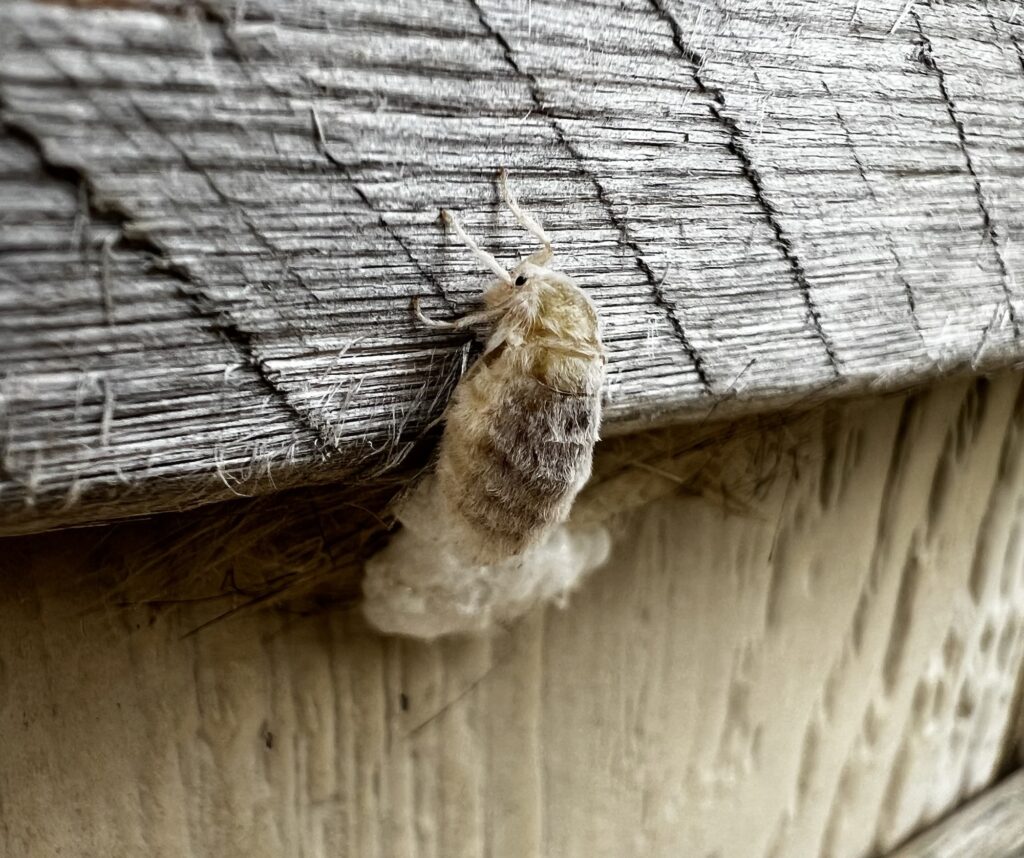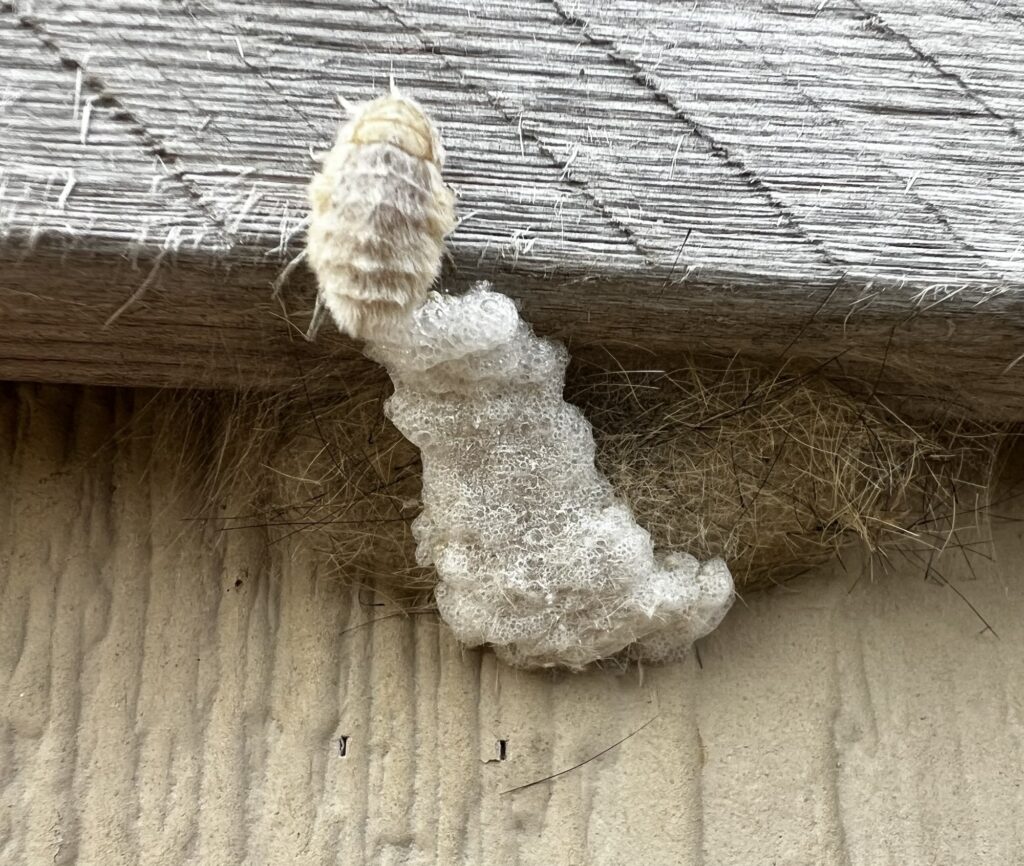
Sometimes, you just have to be at the right place at the right time to witness the amazing. For me, it was a recent experience of seeing a mysterious insect on the goose coop as I was preparing to perform daily maintenance. I’m now familiar with many of the bugs and insects that live here on the farm, but this one was strange…and I like the strange because it means an opportunity to learn. And I am, if nothing else, a voracious learner.
Though much larger than what I (colloquially) call a “spit bug“, it seemed to be behaving in a similar way – industriously extruding a mass of foamy bubbles. The creature looked nothing like a spit bug, though, as it was much larger and furry; in fact, it looked mothlike…and yet, not.
I took some photos of the mystery insect and, after chores were finished, set about researching it. It didn’t take long to identify the creature as a White-Marked Tussock Moth…which explains why it looked mothlike. What had thrown me off, however, is that female adult Tussock Moths are wingless. Have you ever seen a wingless moth?

The Orgyia leucostigma caterpillar is an impressively hairy specimen, and those hairs are both irritating and barbed. In looking closely at the area where the female moth had been laying her eggs (in the foam), I could see where she had emerged from her cocoon after metamorphosing from caterpillar to moth: those irritating hairs were woven into the very fabric of the cocoon. Genius! And the hairs apparently can remain irritating more than a year later.
Nearby, there was evidence that another female Tussock Moth had emerged and laid her eggs earlier. The female moths die shortly after mating and laying their eggs. I suppose that they have completed their life cycles and accomplished their purpose, but it seems a bit unfair that they undergo such a remarkable transformation, only to have their lives abruptly end after laying their eggs. Perhaps this feeling is simply the result of viewing this process through a human lens.

These eggs will likely overwinter and the caterpillars should emerge next spring. Until then, I will wait for the day when tiny hairy caterpillars, roused by Nature’s signals, will emerge from the egg case and begin their journeys. And what have I learned from this experience? Well, the next time I see a strange, wingless, mothlike insect creating a froth of bubbles atop a cocoon, I will know exactly what it is. And that knowledge will not diminish the wonder – if anything, I will have a greater appreciation for what I am witnessing.
Here’s a “chicken or egg” question: the female Tussock Moth is almost perfectly camouflaged against the coop’s siding. How did the caterpillar know what color it would need to become as a moth? Or does the caterpillar simply seek out an environment that will provide the right color match when it emerges in its adult form? Either way…wow.
